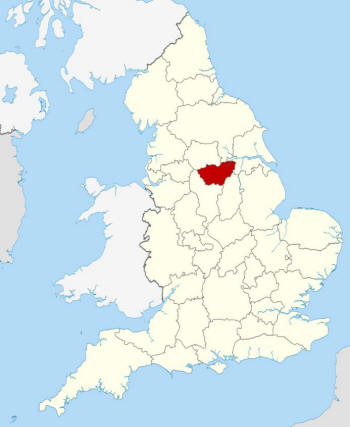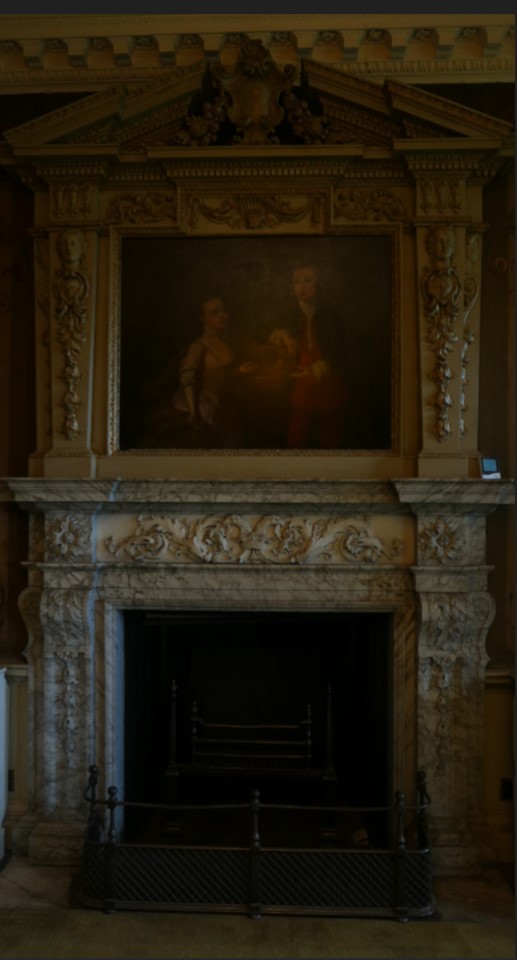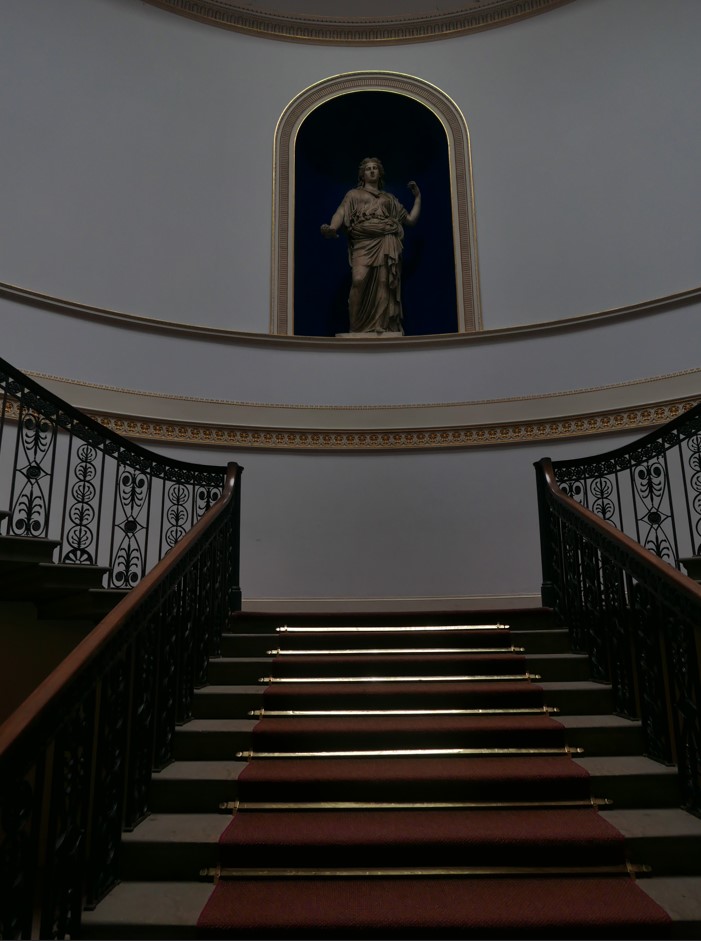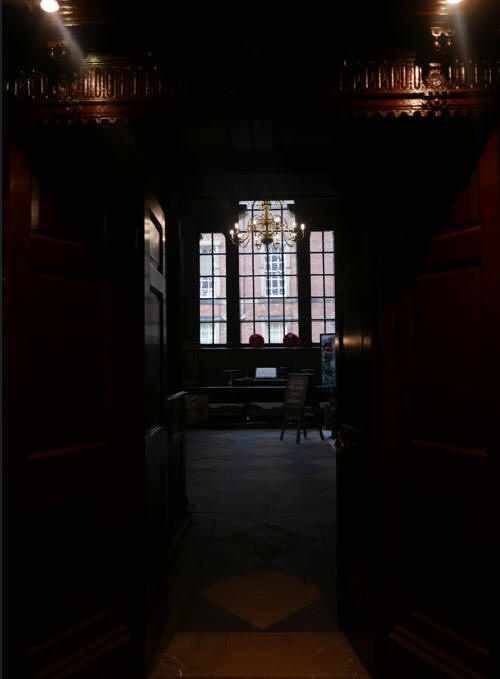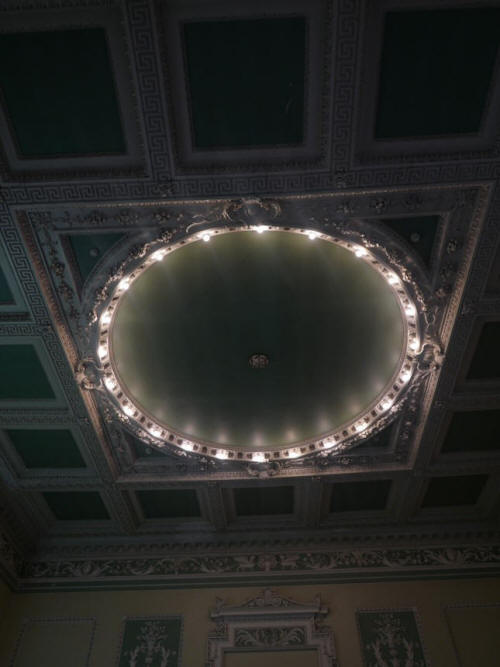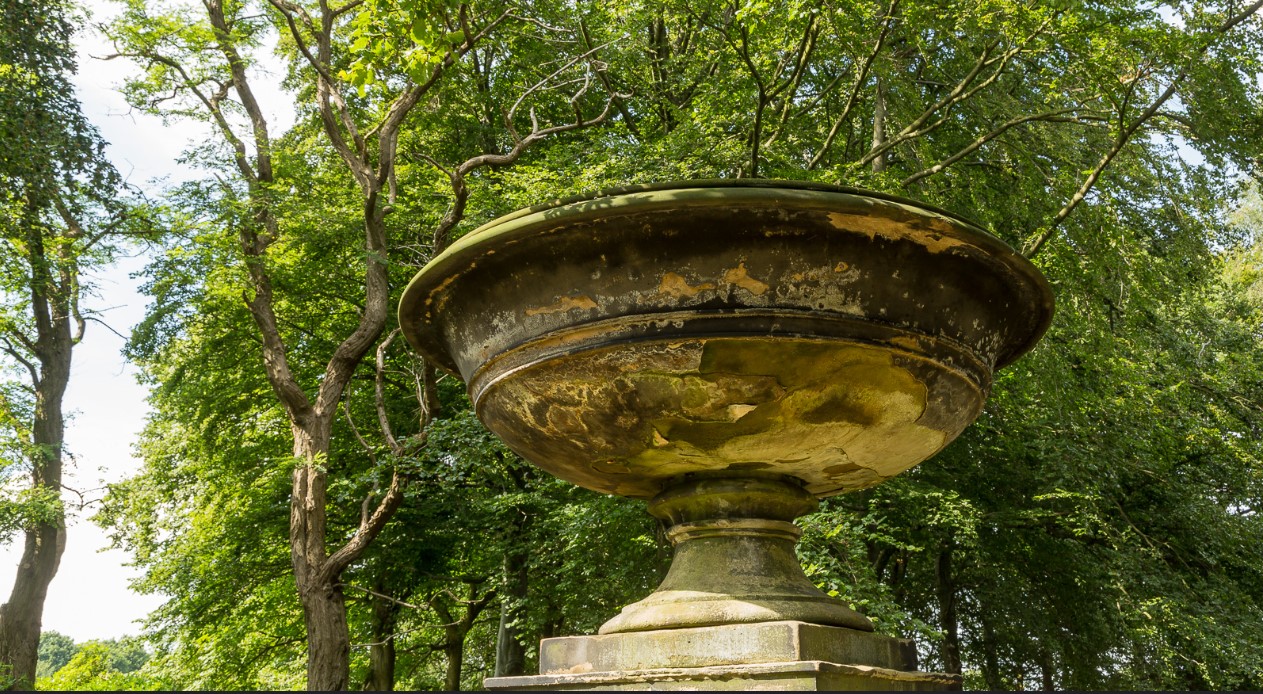 As
with the Home Page of the site, scrolling down the page will give a
quick view of the very varied images here.
Introduction to the Sheffield
Dales, mainly
text, is after the image sections below - these also include some text. The
material on the page is introductory. More images and much more text would
be needed for reasonable, let alone comprehensive, coverage.
As
with the Home Page of the site, scrolling down the page will give a
quick view of the very varied images here.
Introduction to the Sheffield
Dales, mainly
text, is after the image sections below - these also include some text. The
material on the page is introductory. More images and much more text would
be needed for reasonable, let alone comprehensive, coverage.
The Sheffield Dales: fields, moors, woods, ponds,
dams,
rocks, stone, cottages, industry
Sheffield Dales: autumn colours
Sheffield Dales: wheat and barley
Sheffield Dales: hawthorn in May
Sheffield Dales: swifts and swift nesting boxes, a new
design
Sheffield Dales: wildflowers
Sheffield Dales: snow
Introduction to the Sheffield Dales
Supplementary: County of South Yorkshire and Wentworth Woodhouse
South Yorkshire
The Yorkshire Dales are very well known, so too the Derbyshire Dales, at least to people who know that part of Derbyshire, but the idea of the Sheffield Dales is a new one. I give my reasons for proposing 'The Sheffield Dales' in the introduction. This is a remarkable area, well worth visiting. If I hadn't been born in Sheffield, I would have wanted to move to Sheffield.
Please see also my pages on two Midlands counties, Derbyshire and Staffordshire.
The Sheffield Dales: fields, ponds, woodland, stone, cottages, industry
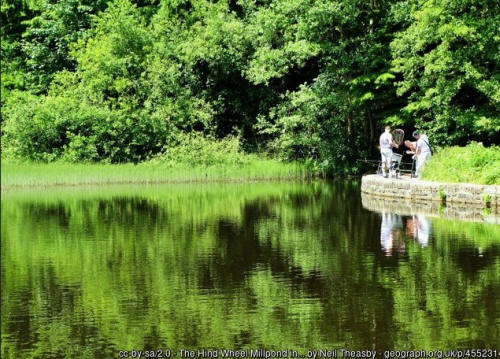
Above, the intense beauty of the Hind Wheel millpond, Rivelin Valley, Sheffield. Below, the road which runs along the river valley towards the millpond, a long avenue of lime trees, about 700 in all. The road begins not far from the Hillsborough Football Stadium.
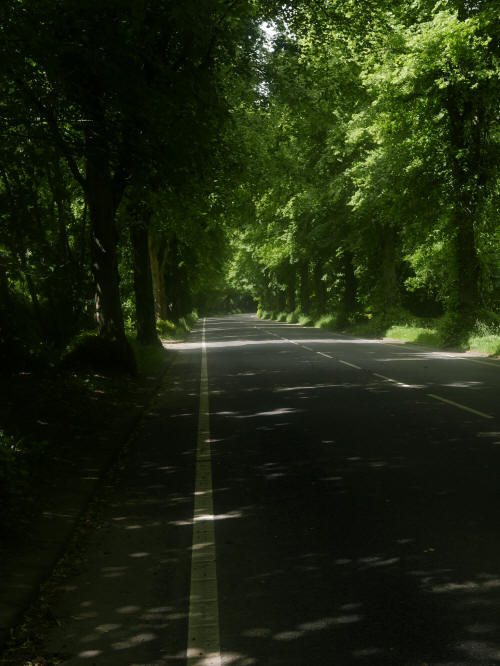
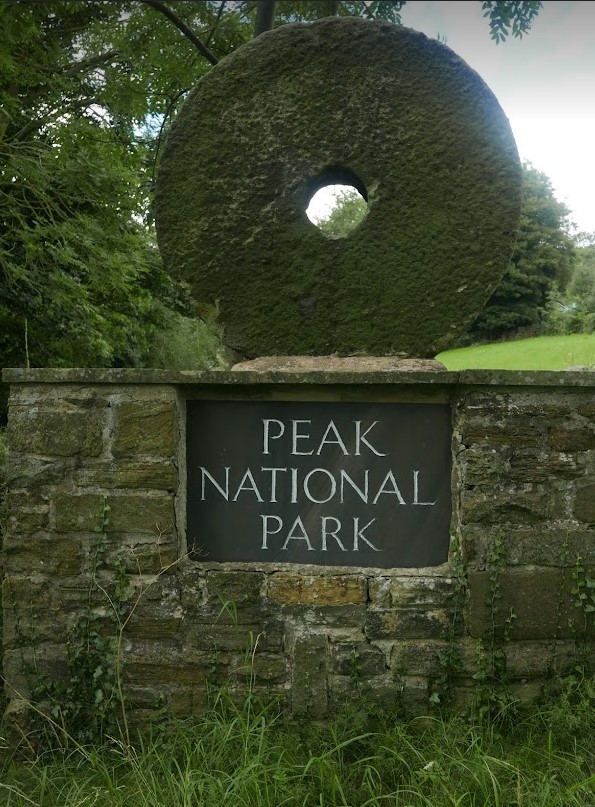
About a third of Sheffield lies within the Peak District National Park. The millstone grit boundary markers are very distinctive and a reminder of important aspects of work and industry in the peak district. They had many uses, in grinding corn, for crushing wood to make wood pulp used in paper making, in the Sheffield area as well as other areas for manufacturing tools with sharp edges. Small millstones are still used in the cutlery industry.
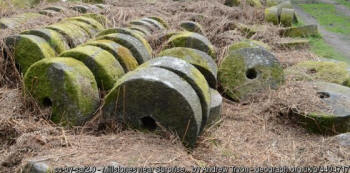
Above, millstones, near Surprise View, Sheffield
Millstones are also a reminder of the underlying geology. Millstone grit is a coarse sandstone from the Carboniferous era. Sheffield lies within the Dark Peak part of the Peak District, where these rocks are to be found. The Peak District also includes the White Peak, where the rock is very different, limestone.

Above, the Peak District National Park and its boundaries.
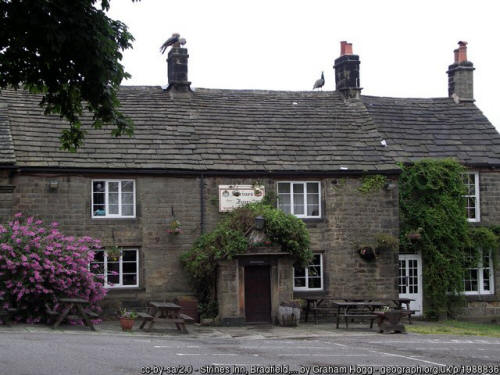
Above, the Strines Inn. Visible on the roof, some of the peacocks belonging to the inn.
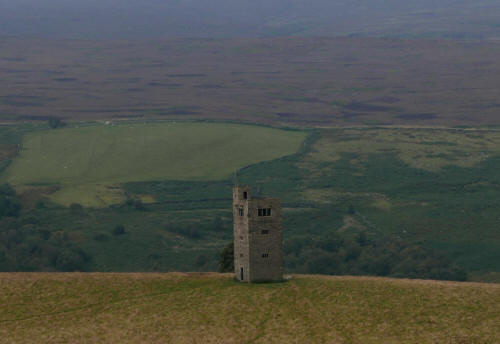
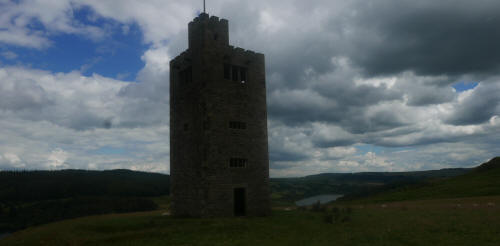
Above, photographs of Boot's Folly and surrounding area, a tower prominent in this area of extensive moorland, South of Strines reservoir. It used to have a spiral staircase.
Below, a building is in the Loxley Valley. It was erected after the Great Sheffield Flood of 11 March 1864, when the flood waters devastated the valley and reached the city centre. The Dale Dyke Dam was being filled for the first time but the embankment gave way. At least 240 people were killed.
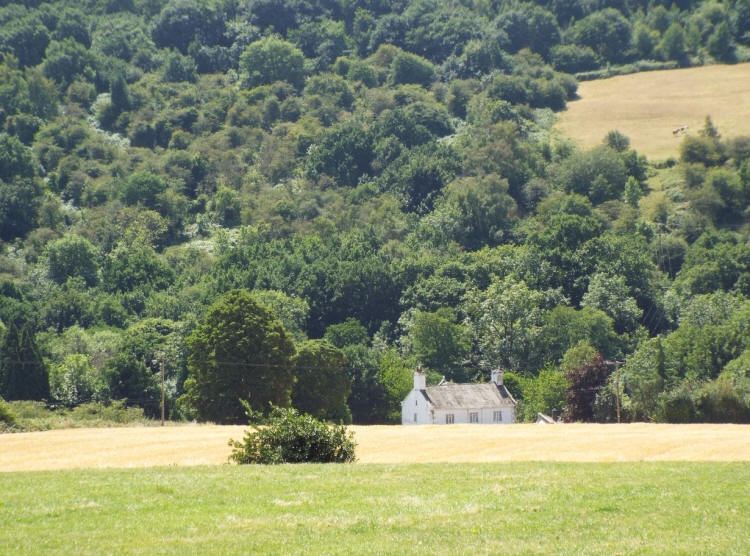

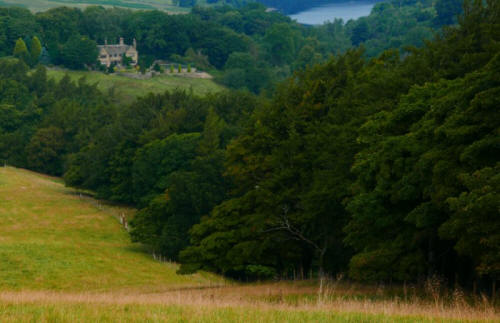
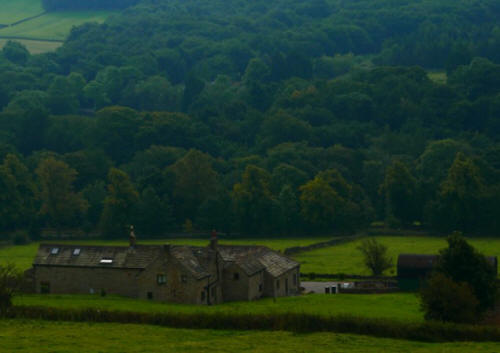



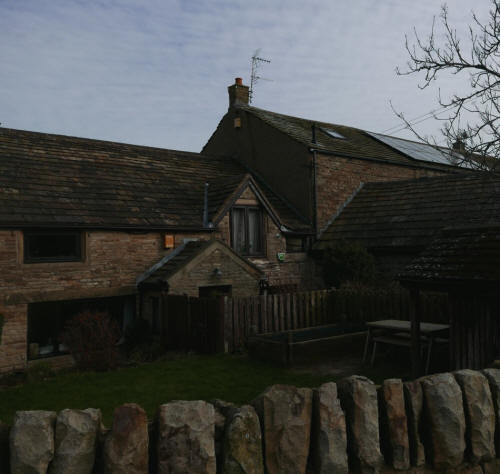
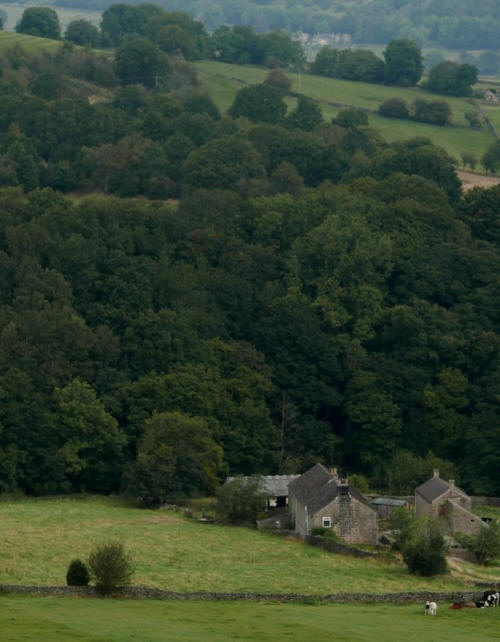
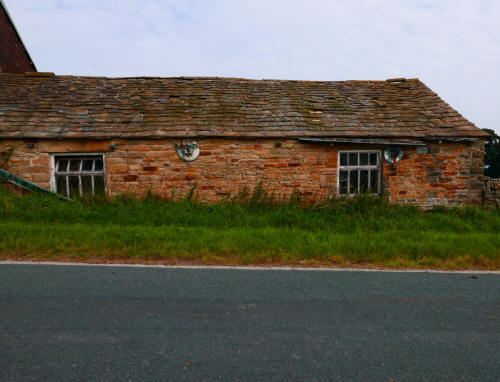
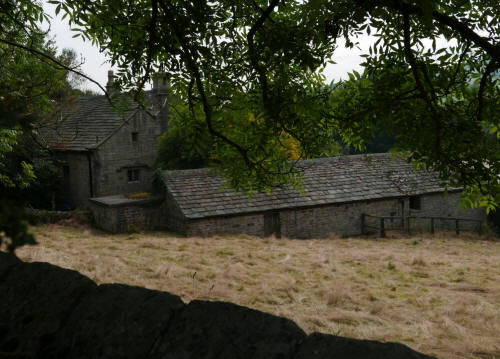


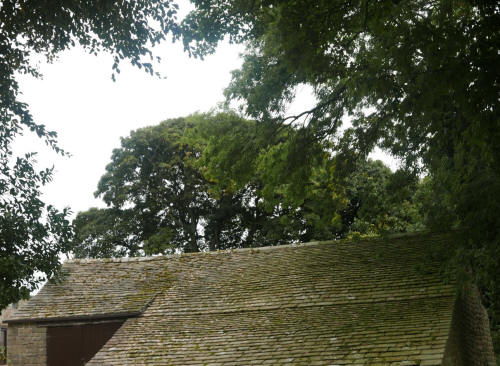
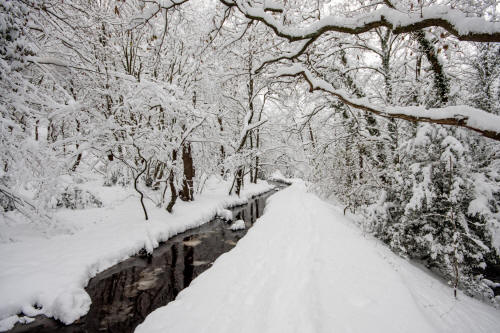
Next two images, Sheffield Winter Garden, the largest urban glasshouse in Europe, first in its city centre setting, then an interior view. Followed by two photographs of St Paul's Church, Wordsworth Avenue, Shefield, included as examples of interesting, very successful architecture and not for religious reasons - my views are anti-Christian. A discussion of the architecture will be needed. The churches were designed by Basil Spence, the architect of Coventry Cathedral. Then there is a view of the medieval (perpendicular) architecture of Ecclesfield Parish Church, completed about 1500, with remnants of 12th century building. This is a Grade 1 listed building. The conjunction of building and vegetation - and building and the area in which the building is set - is very successful. And then some views of industrial Sheffield's industrial past - an aspect of Sheffield of massive importance, like Sheffield's industrial present, despite radically changed circumstances.

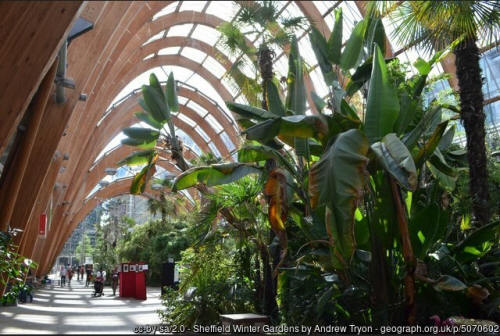
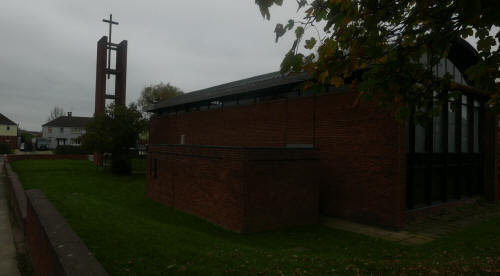


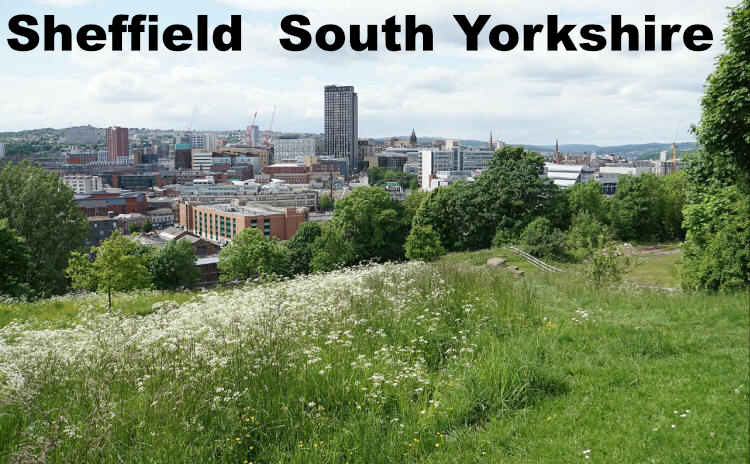

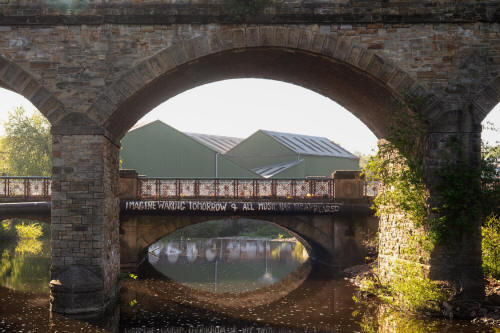
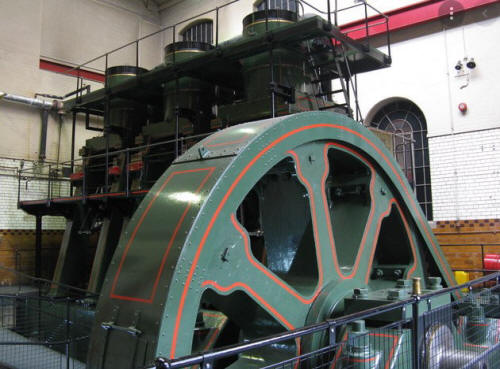
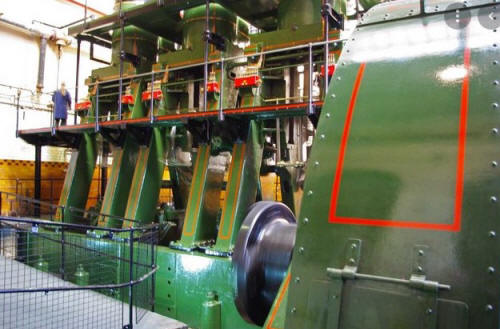
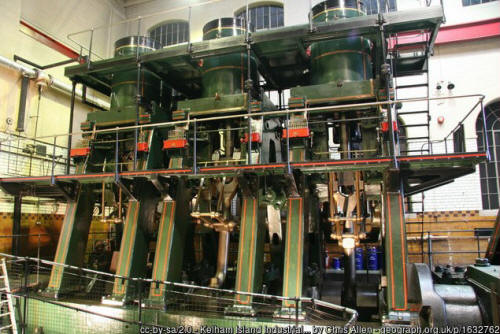
Above, views of the River Don Engine: a steam engine built in 1904 for rolling steel armour plate, now in Kelham Island Museum, Sheffield. The engine could go into reverse from full speed in two seconds. It was last used commercially to roll out reactor shield plates for nuclear power plants. It's demonstrated at the museum - a thrilling sight and sound.
Recommended: a short BBC film on the River Don Engine, showing it in action.
https://www.youtube.com/watch?v=jJqUgusvhBE&ab_channel=markansell85
Below, making Sheffield steel - the drama of steel.
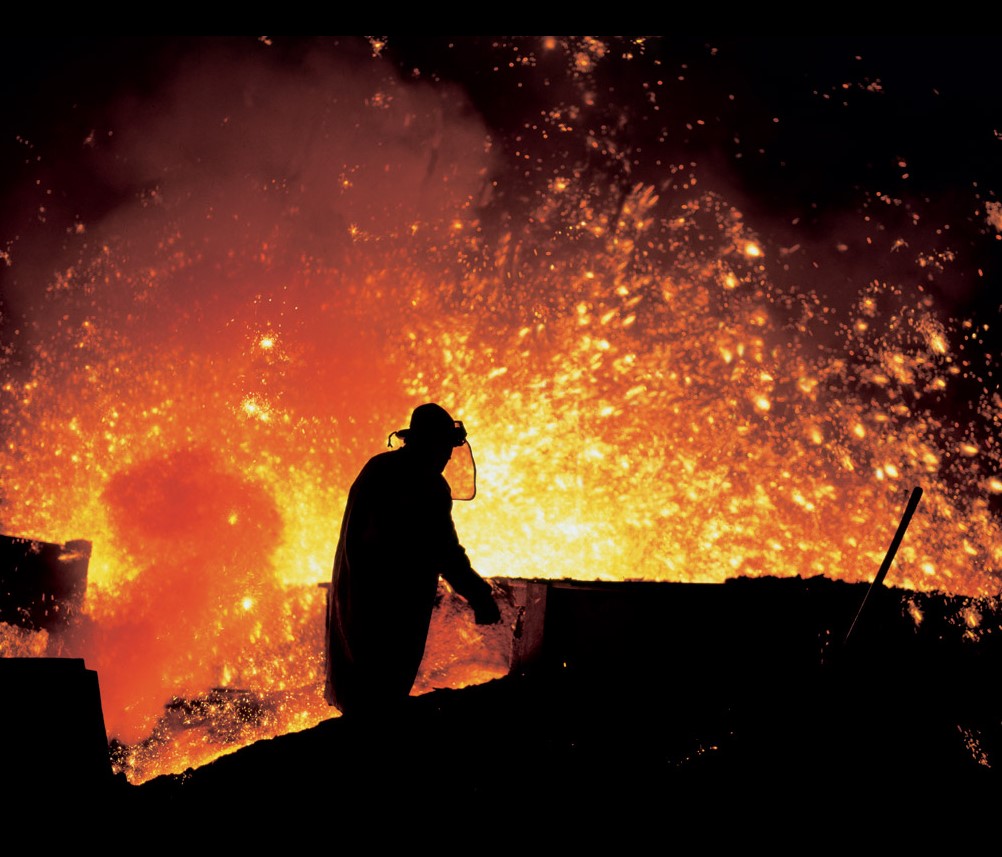
Below, some views of Stanage Edge, one of the rocky outcrops near the border with Derbyshire and shared with Derbyshire, with a large number of climbing routes. Sheffield is a very important climbing centre.
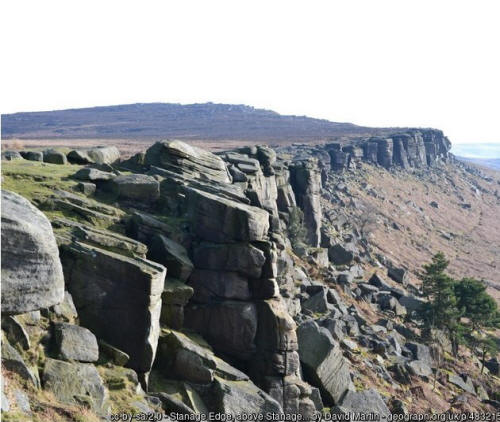

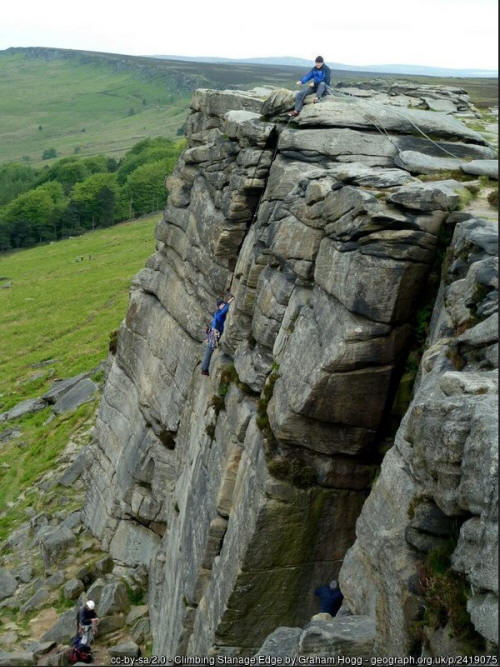
Below, bouldering at Stanage Edge. Bouldering: a form of free climbing (without use of ropes) on small rock formations.

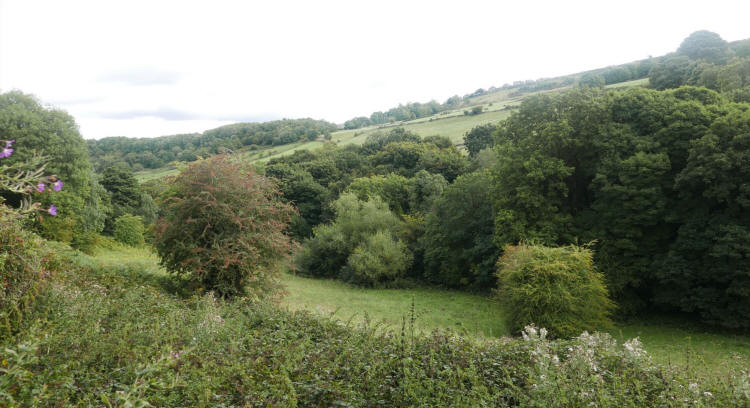
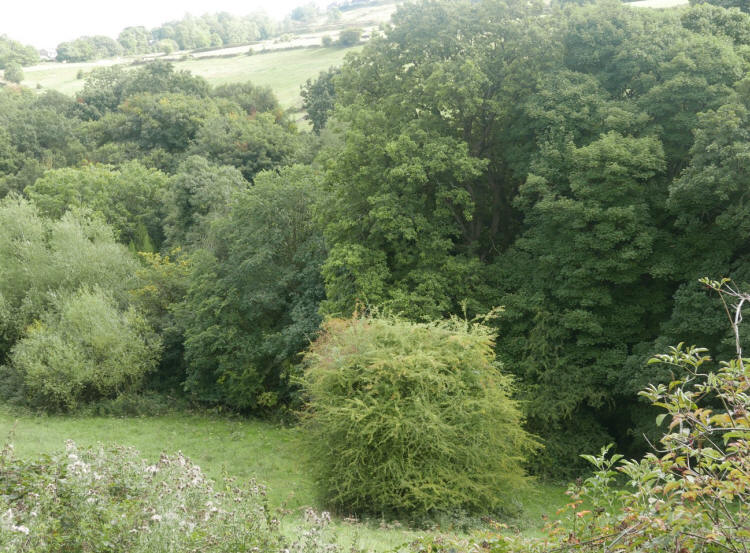
Below, dam at Old Wheel Farm, Loxley Valley
In this valley, water powered medieval corn mills and the wheels used for
manufacturing agricultural implements and cutlery. Later, there was heavier
industry, including factories which made furnace bricks for steel works.
In 1864, this area was devastated when a much bigger dam, the Dale Dyke Dam,
collapsed. An estimated 3 million cubic metres of water swept down the
Loxley Valley, through Loxley Village and on to Malin Bridge and
Hillsborough, where the River Loxley flows into the River Don. The water
flowed down the Don into the centre of Sheffield. More than 240 peple were
killed.

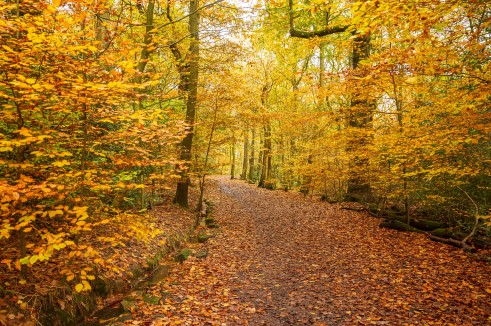
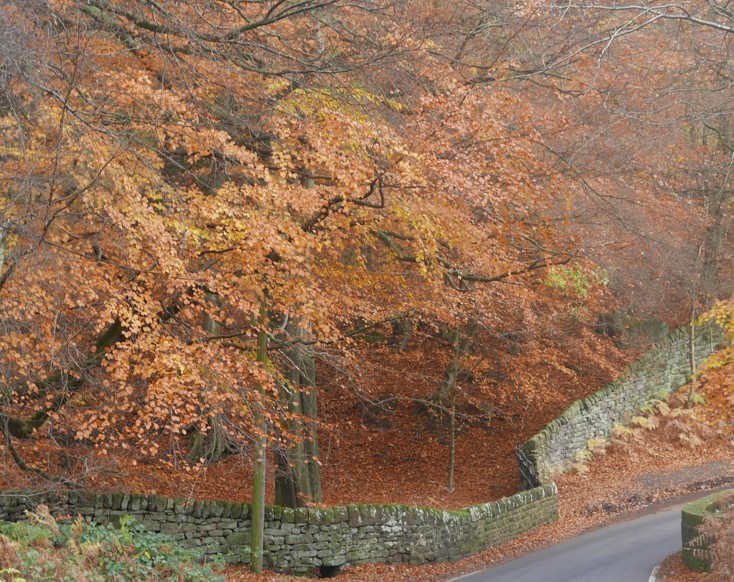
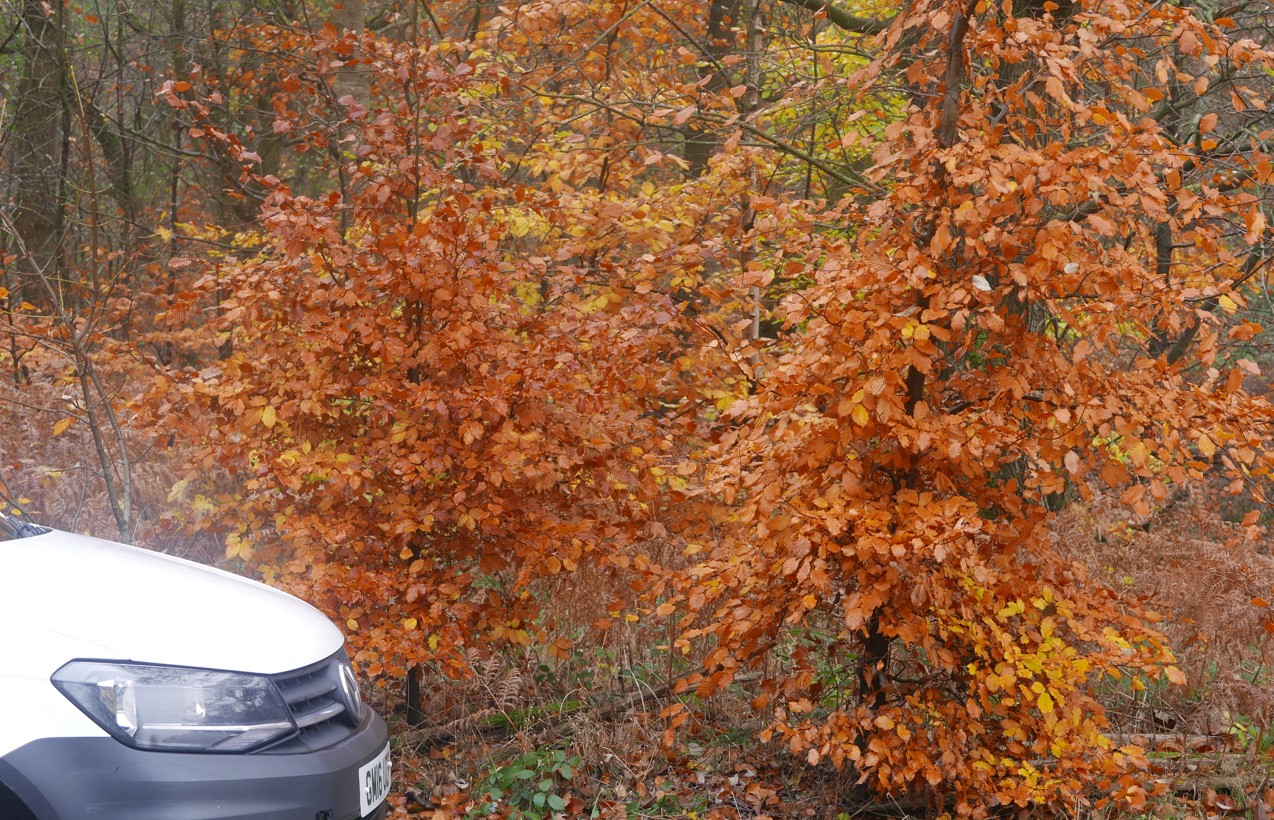
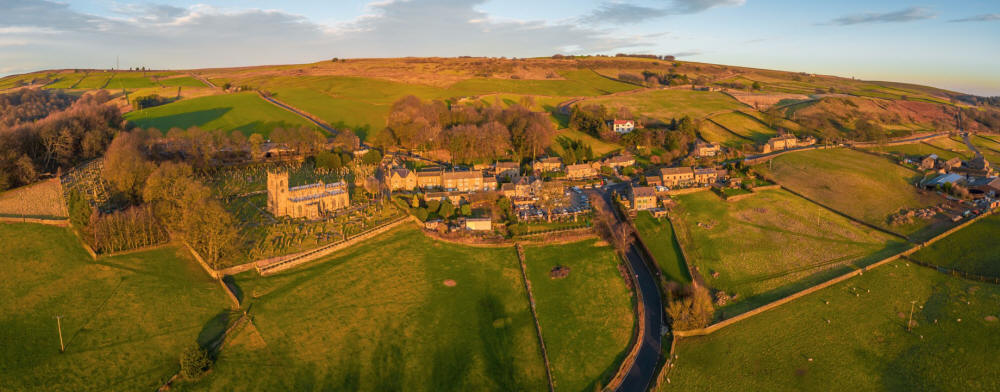
Above, aerial view of Bradfield

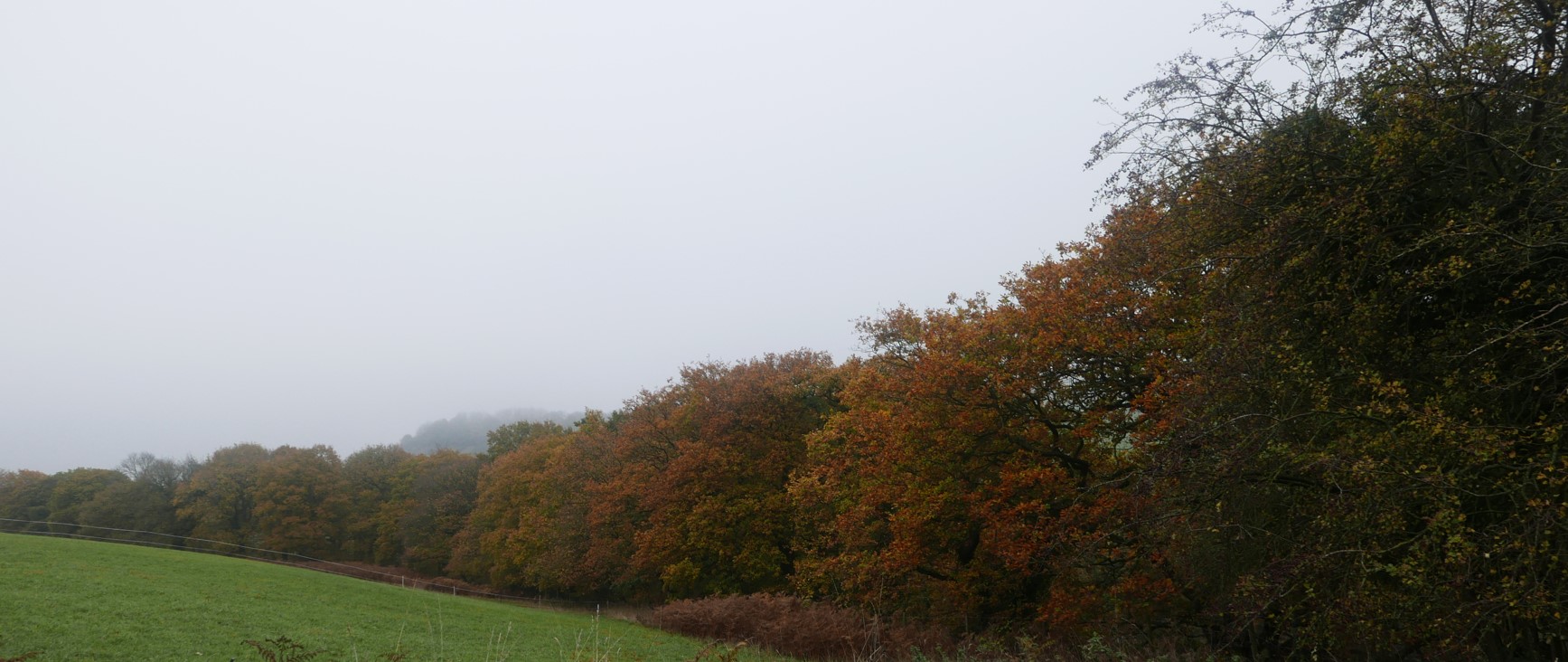
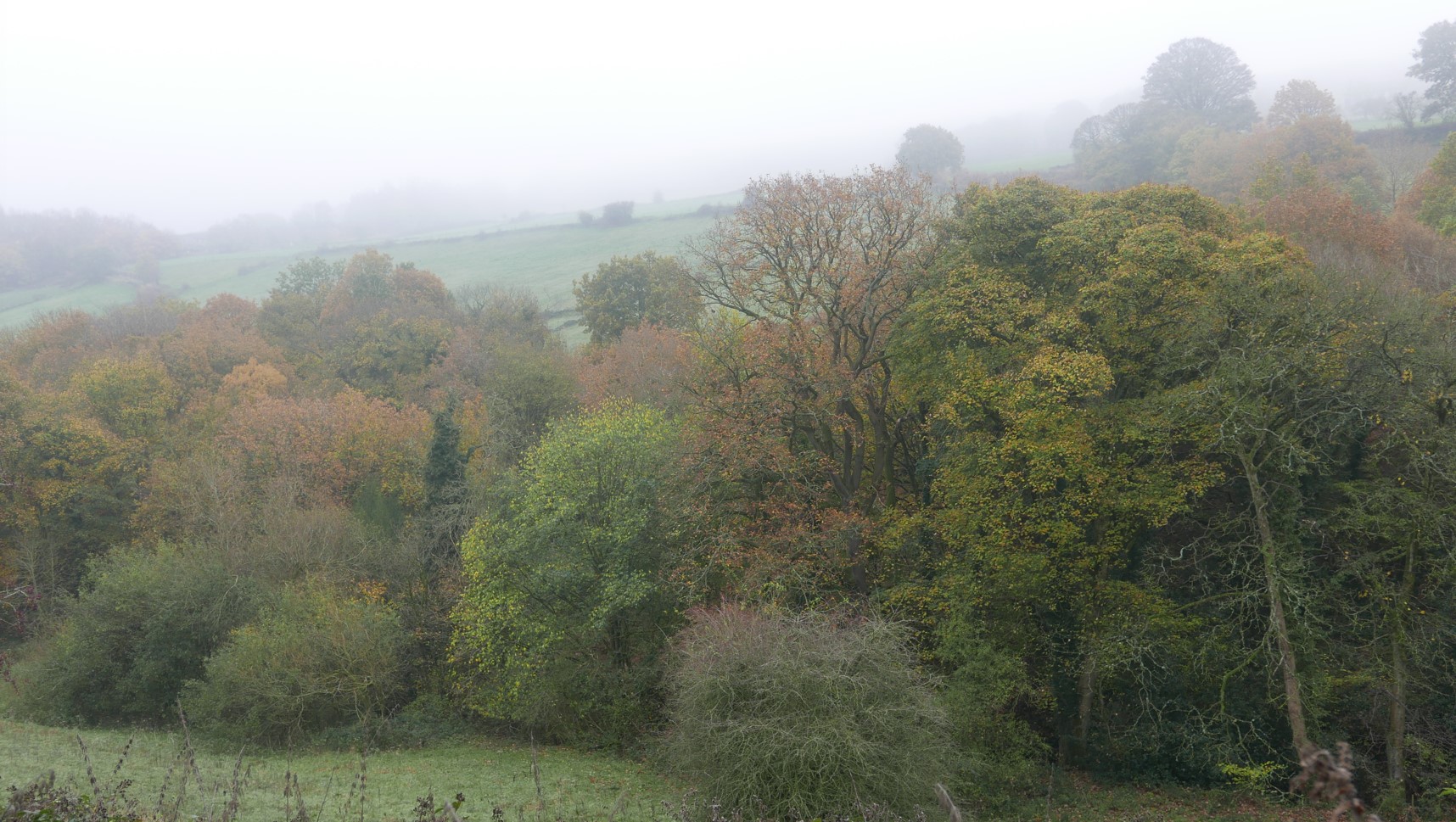
Sheffield Dales wheat and barley
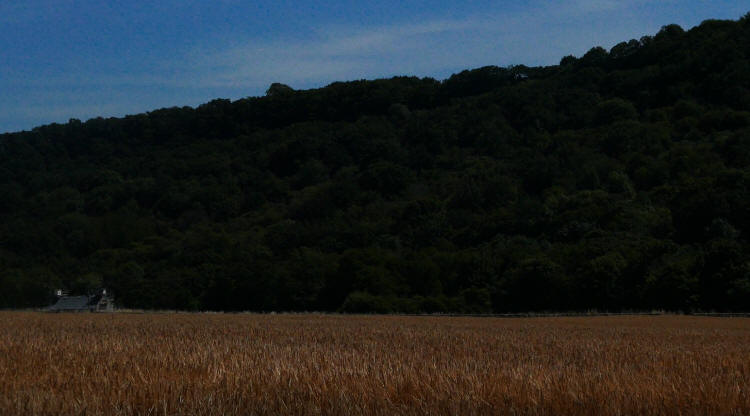
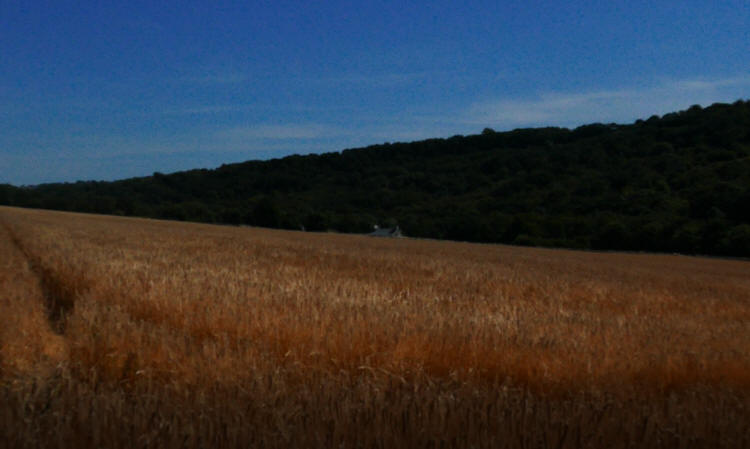


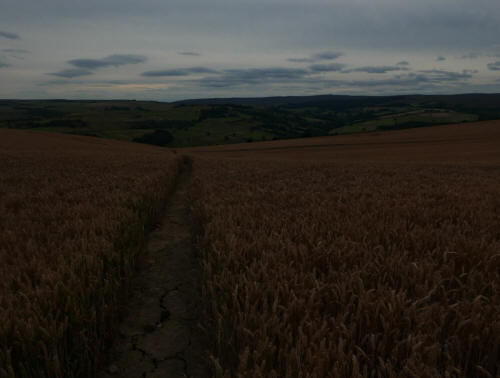
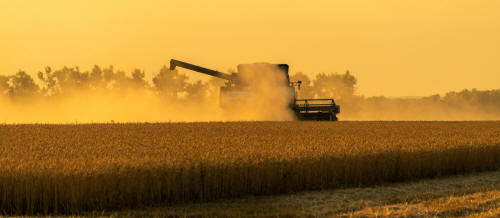
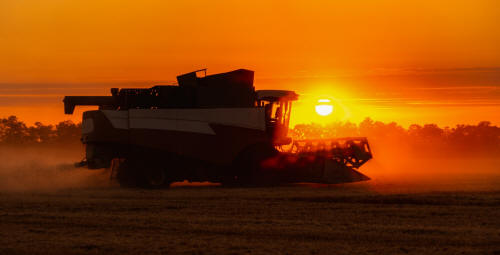
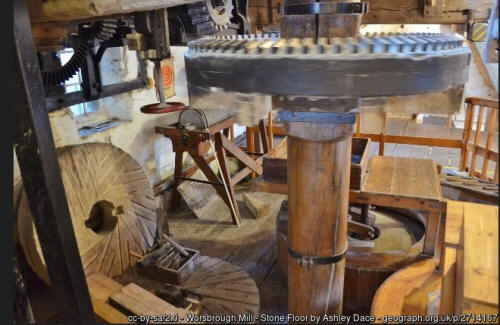
The first three images: barley growing in the Loxley Valley, Sheffield.
The
fourth and fifth images: barley growing in a large field
adjoining the road from Worrall to Bradfield in late July. The wheat is some
way from full ripening in general: this is an upland field. The tree in the
fifth
image is a sycamore, to me an unprepossessing tree in general but valued by
so many country people, past and present. Amongst its advantages, its
resistance to wind, its value to wildlife, the value of its wood for some
purposes - and, despite the size it grows to, the frequent allure of its
clear-cut outline, as in this image.
The sixth and seventh images: barley grown and harvested in flatlands, far
from Sheffield.
The eighth image, some of the machinery in the Worsbrough Mill, South Yorkshire. The mill is well worth a visit - in fact, more than one visit.
I appreciate the flatlands of South Yorkshire as well as the dales (but the land is not so much flat as undulating) as well as the valleys, hills, mountains and flatlands of other parts of the country, and other countries - the hills and mountains of Cumbria, Wales, Scotland and Northern Ireland, the flatlands of Lincolnshire and Essex, and all the other areas which have significance for me, not forgetting Northamptonshire, Rutland and so many others.
Often, things which are useful or indispensable aren't beautiful and things which are beautiful aren't useful or indispensable. In the case of wheat and barley growing, beauty and use are combined, and technology doesn't lessen in the least the beauty. Using modern technology, the only adequate technology if large populations are to be fed, at harvest time, fields of wheat and barley are combined - the wheat and barley are harvested using combine harvesters, astounding examples of human ingenuity and resourcefulness.
A Youtube video which has an intense and vivid depiction of a field of barley, a young woman in the midst of the barley, and which gives the words of an unforgettable and compelling song, about human emotions. The title of the video is Sting Fields of Gold Lyrics and the address is
https://www.youtube.com/watch?v=AM4nWq6mU9k&list=RDAM4nWq6mU9k&start_radio=1
Although brewers and beer drinkers are in absolutely no danger of overlooking the huge importance of barley in brewing (and wheat for brewing wheat beer), I think that the aesthetics of barley and barley fields and wheat and wheat fields are often overlooked.
For me, a field of ripe barley or wheat is one of the most magnificent sights of the countryside. There are farms very near here and farm after farm after that. Nearly all of them are sheep farms. The image at the beginning of this section shows an exception, a field of ripe barley I came across in the Loxley Valley, Sheffield. This valley and other areas were devastated during the Great Sheffield Flood of 1864 after the Dale Dyke Dam gave way. An estimated 3 million cubic metres of water swept down the Loxley Valley and through Loxley Village. The flood continued south from the River Loxley to the River Don, towards central Sheffield. More than 240 people were killed.
Within the boundaries of South Yorkshire are many farms where wheat and barley are grown. Photographs of these fields will be regarded by many people as very plain, but to look at a field of ripe wheat or barley can be, if not the experience of a lifetime, one of those experiences which are absorbing and rewarding - but far more than that.
I favour the planting of wildflowers at the margins of wheat and barley flowers, but the wildflowers are an enhancement of something which is already magnificent. Obviously, the planting of wildflowers is just as much an intervention as the planting of wheat or barley.
I own a scythe, which I used when I first took on my allotments, I still have an interest in the rhythm of scything, the world of scything, but no interest in using a scythe now in my allotments. If modern machines are often intrusive, practicalities and realities are often even more intrusive. My allotments now are much more intensively used - this isn't intensive gardening, let alone intensive farming, but simply gardening which makes the best use of this scare resource, the land I have available. Individuals may choose to harvest barley or wheat in their small-scale growing but obviously, this is no way to grow cereal crops for baking or brewing.
Small scale growing of barley and wheat, the only kind of growing which
is feasible when a scythe is used, is aesthetically limited, to me. A large
field of barley or wheat is what I call an 'expanse,' something which has
'scale.' 'Scale' is offered by large, very large vistas, such as the sea,
seen, perhaps, from a cliff in Devon or Cornwall or Pembrokeshire or
Yorkshire. A pool can offer intense experiences, but not the intense
experience of scale.
Some of the belt drives in a combine harvester:

These may not seem to have much in the way of aesthetic appeal, or any aesthetic appeal at all, apart from the aesthetic appeal offered by geometrical forms - which can be substantial, offered by so many Renaissance buildings and many works of contemporary architecture. Intricacy can be the basis of aesthetic appeal, intricacy of machine parts as well as intricacy of a wood carving. The belt drives and pulleys here do offer something like effective contrast, the contrast between linear and rounded. But I wouldn't want to make any claims that this is remarkable in any way for its aesthetic appeal.
Once the barley and the wheat have been harvested, the field can't have quite the same impact, although the wonderful colouring remains for a long time. The wonderful colouring remains for longer in the form of straw bales. I've used straw bales for many years, for a variety of applications - and for their looks.
Traditional thatch has a strong appeal. It has a strong appeal for me. But the colour of traditional thatch, rained on, exposed to the elements, is distant from the colour of the straw which was used.
Straw bales give a way of capturing the the golden barley or the golden wheat, of having it there in one of my two allotments. Unlike thatch the roofing material, the straw bales I've used in my allotments have been protected. The straw bales which used to form one of the walls of the greenhouse extension were protected by the overhanging roof. Other straw bales were stored under the curved polycarbonate roofs of some small structures near the pond. The fading of the barley is very slow in these conditions and the straw bales can easily be replaced when their gold has gone.
There are images of the straw bales I've used in many places in the gardening and design sections of the site, for example on this page
www.linkagenet.com/phd/phdnew.htm
and on the Home Page of the site.
Sheffield Dales hawthorn in May
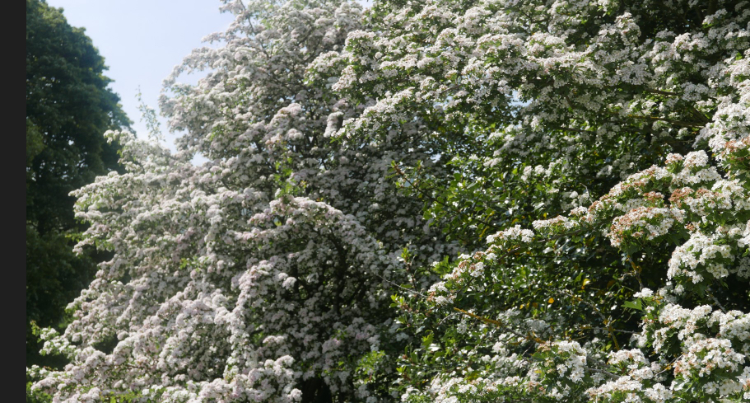
Sheffield Dales: swifts and nesting boxes, a new design
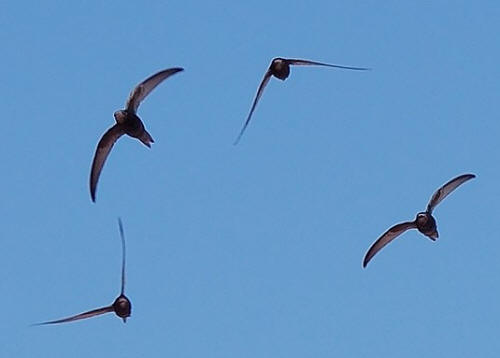
Above, not Sheffield swifts but swifts of the same species, Apus apus
The third column of my page
gives detailed information about the swift nesting boxes I've designed. They are easily constructed and very easily installed. It includes a short video showing how quickly and easily a nesting box can be installed. It's installed outside a window, from inside the house, avoiding the need to work at a height on a ladder. This is a photograph of the first box I designed and constructed after installation.

Sheffield Dales: wildflowers
These are images of wildflowers to be found in just one very small part of the Sheffield Dales - my allotments. All of them are British natives. Most, not all, were encouraged to take up residence by me. Smaller images of these flowers are provided on the Home Page of the site, only the scientific (binomial) names, not the common names, which are almost always beautiful and evocative.
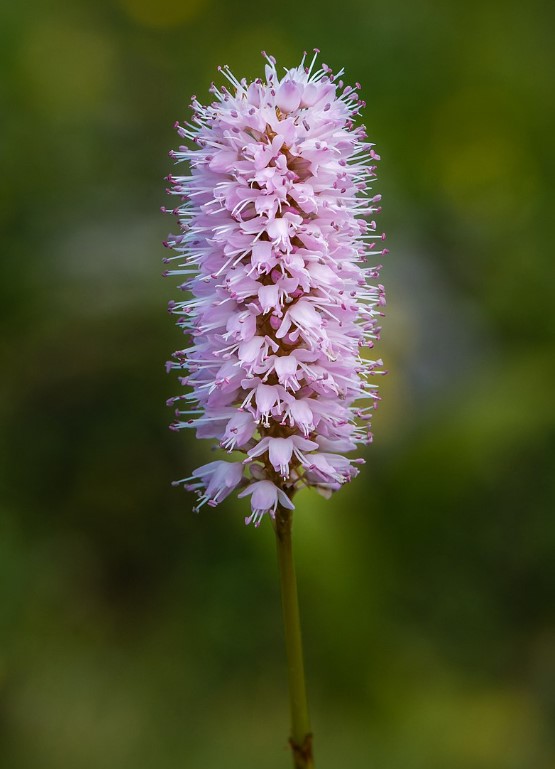
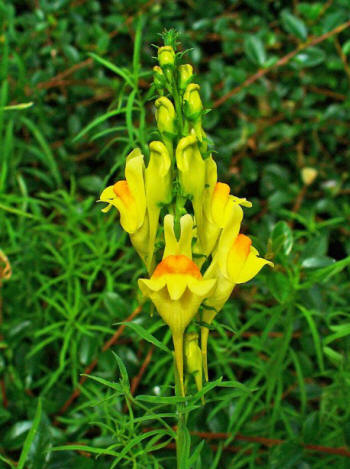
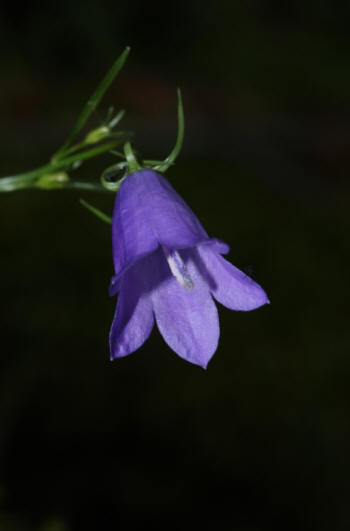

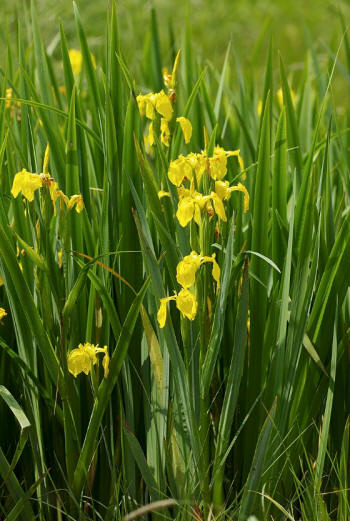
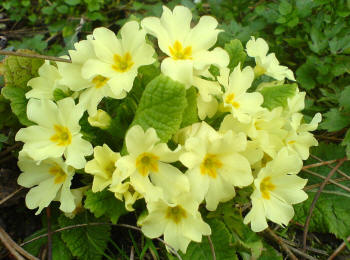
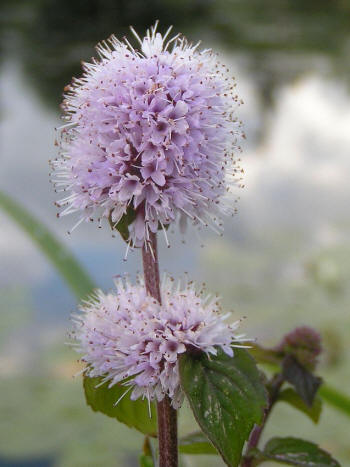
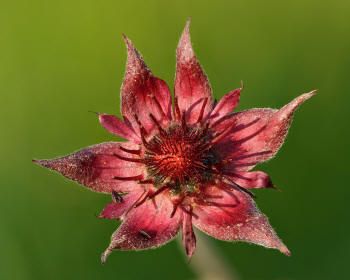
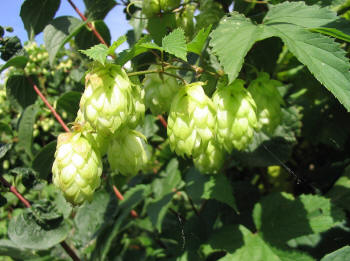
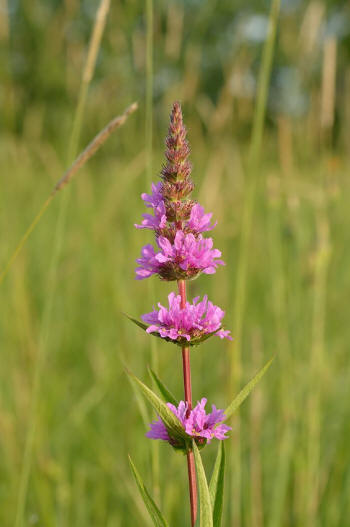

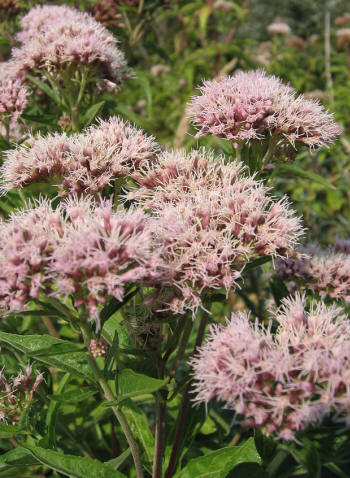
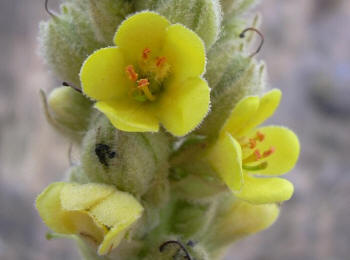
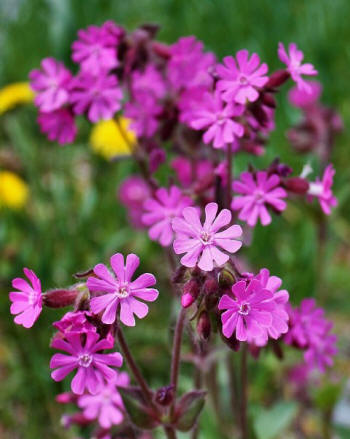
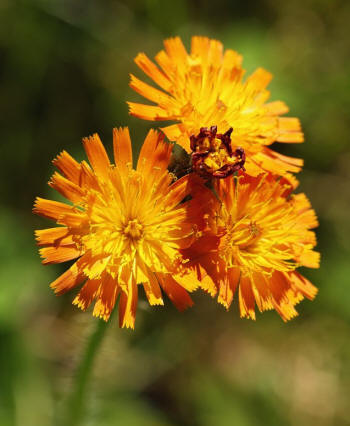
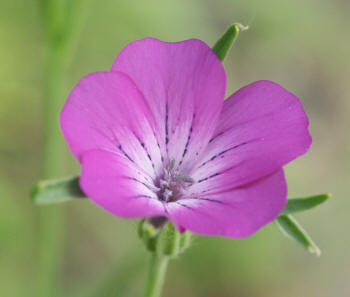

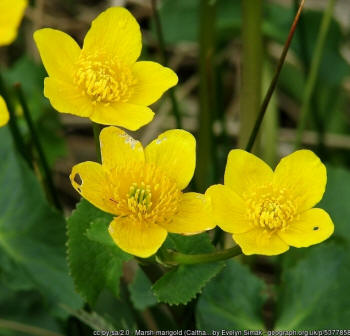
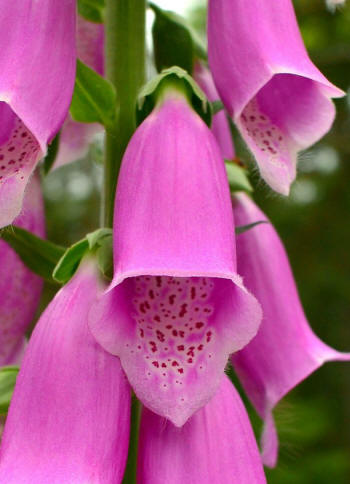
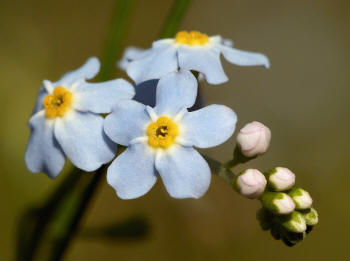
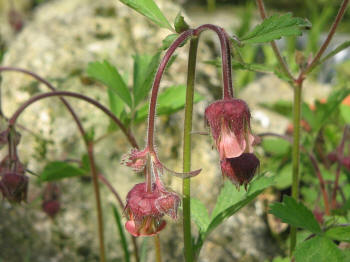
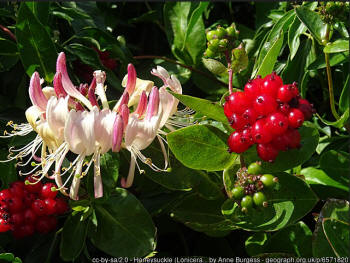
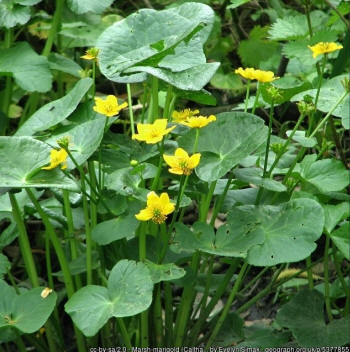
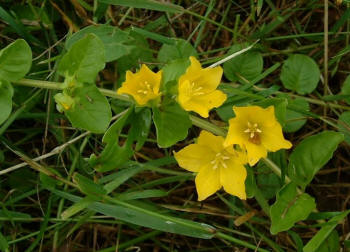

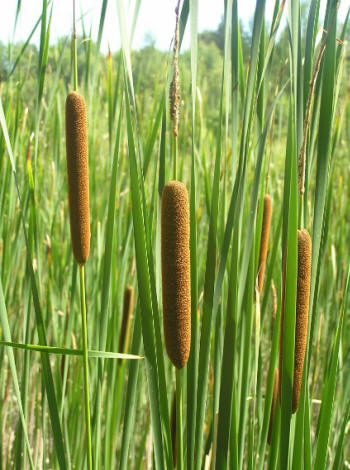
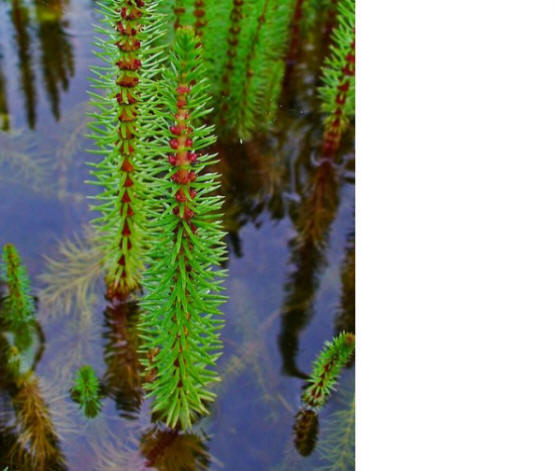
Sheffield Dales snow
My house is in the 'Sheffield Dales.' Below, view through
the window
of my main workshop.
Another view through the window.
View from upper
window of part of the small back garden (previously, backyard.) These views
are of scenes which would be unremarkable in countries which have low
temperatures and heavy snowfall in winter. Here, scenes like this are rare
and worth recording, I think.
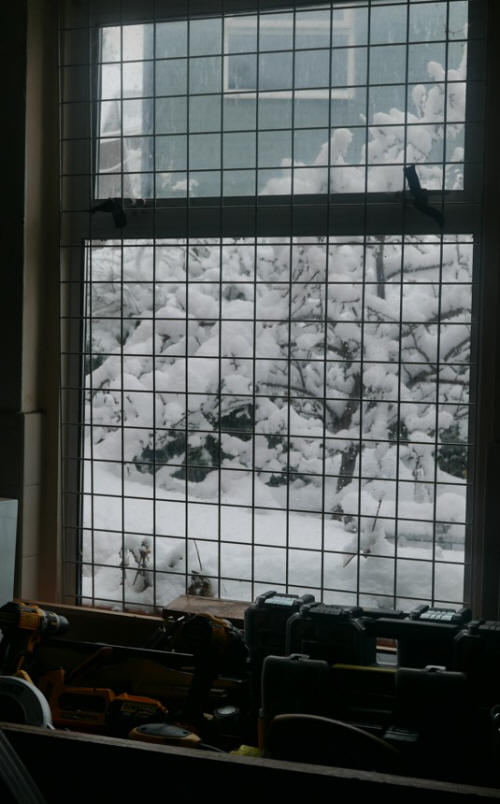
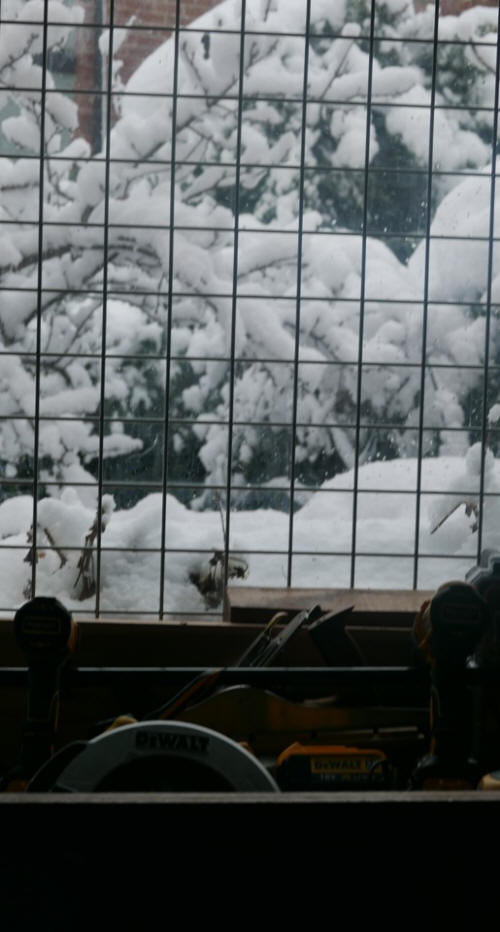
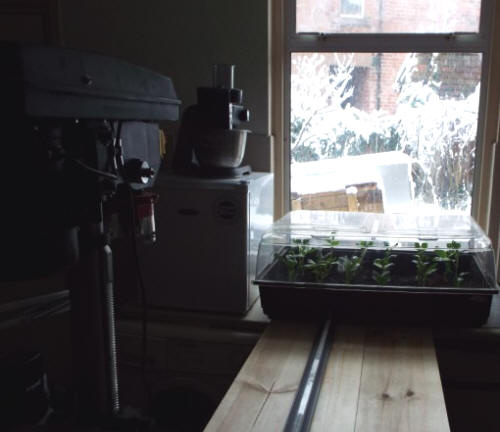
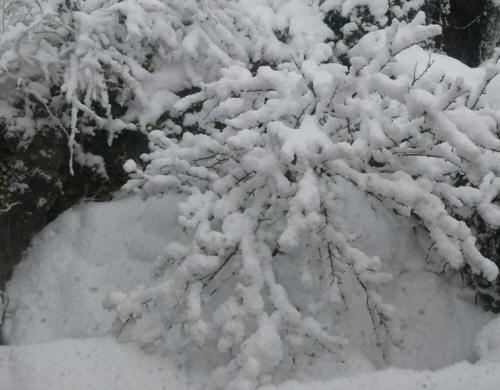
Below, views of snowy fields next to Hangram Lane, near Ringinglow Road, which leads to the Derbyshire border. 2nd week of January, 2025.


Below, snow fields at High Bradfield, second week of January, 2025

My page
https://www.linkagenet.com/phd/cello-violin-viola-proms.htm
has sections on my activities as a cross-country skier in the second and third columns. An extract.
All the greatest joys I've experienced as a cross-country skier have come from skiing in the hills near here, the foothills of the Pennines, including the hills over the county border in Derbyshire, in particular at Edale, the start of the Pennine Way.
...
The experience of skiing over a frozen pond, again and again - the pond is ten minutes walk from here - during a very cold winter when the ice was thick and completely safe could never have become a frequent experience. So too the experience of seeing a white-furred hare walking delicately on the smooth snow on the hills not very much further away, the expanse of smooth, untouched snow stretching in all directions until stopped by the dry stone walls enclosing the fields, the experience of skiing over fresh fields, leaving behind the snow meadows I'd marked with the trails of my skies, sometimes the swish of the skies through powder snow - a rare form of snow here.
The dusk falling on the snow, fresh snow falling on fallen snow, the weather becoming bleaker but the elation of skiing untouched, the experience of skiing down a steep slope and skiing to the top of the slope again and again. The emptiness of the Yorkshire and the Derbyshire hills and the fullness of experience that comes from being in those hills.
Introduction to the Sheffield Dales
Most of the images in this column are not given a name and a location, for various reasons. Most of the photographs on this page (and many other pages) were taken by me. Other photographs are credited - for example, the first photograph in this column is from the Geographia project and has a copyright stamp. One of my reasons for not giving captions in many cases is to respect the privacy of the owners or tenants of individual properties.
The material on this page is a frank, far from comprehensive look at the city of Sheffield.
Sheffield has beauty, character, individuality, blandness, massive strengths and vey significant weaknesses and, of course, a great deal that's somewhere in between. It's a very different place from Barnsley, Rotherham and Doncaster and the rest of South Yorkshire. I've a strong interest in the whole county of South Yorkshire. The distinctive but varied attitudes to be found in the different parts of South Yorkshire are changed out of all recognition or lost completely in many parts of Sheffield. The distinctive Sheffield accent and dialect (I speak with a Sheffield accent, to a large extent in Sheffield dialect, or one form of Sheffield accent and dialect) vanish in large parts of Sheffield. My own attitudes to dialect and the English language are complex and I don't attempt to give them here.
Then there are the counties bordering South Yorkshire. In my case, Derbyshire is not far away. I've a strong interest in Derbyshire as well, but there's no part of the country without interest for me, although I identify strongly with South Yorkshire. There are pages on the site on Derbyshire and Staffordshire
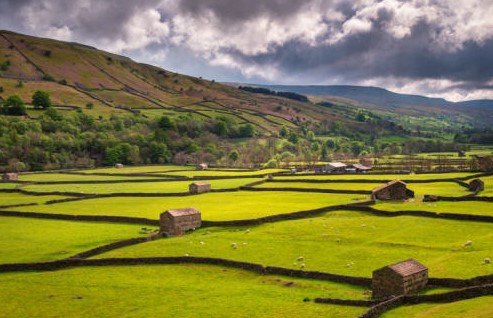
The landscape and buildings of the Yorkshire Dales are admired by very many people, and many people feel - as I do - that the buildings have a rightness in this landscape, that they aren't in the least jarring, an intrusion in this landscape. The photograph above shows the fine blending of buildings and scenery. There are many areas where it would be impossible to make the same claim, that the buildings are a fitting part of the landscape. Not all the buildings in the Yorkshire Dales are equally at home in the landscape. The buildings which fit into the landscape particularly well are examples of vernacular architecture, a strong interest of mine, together with other forms of architecture. These particular buildings are generally made of stone, and often the roofs, like the walls, are of stone - stone slates.
The vernacular architecture of England is very
varied in its styles, techniques and materials. The materials include
building stones as different as Cotswold limestones and granite, Welsh and
Cumbrian slate, roofing of tiles and thatch - and so much more, a wonderful
achievement. The vernacular buildings of this country spring from the
underlying geology, or reflect the lack of suitable building stone, so often
overcoming the lack with miracles of skilled construction, as with so many
of the vernacular buildings of Suffolk, amongst many other counties.
The characteristic vernacular architecture of the North Pennines is widely
recognized and admired but the vernacular architecture of the South Pennines
deserves wider recognition. Sheffield, has buildings with strong linkages
with buildings of the Yorkshire Dales but
buildings which are distinctive. In such
settlements as Bradfield and Dungworth, in the farmhouses and other farm
buildings not part of any settlement, the buildings blend with the landscape
and enhance the landscape and stand out from the landscape. The varying
landscape of the 'Sheffield Dales' is different from much of the Yorkshire Dales.
The Sheffield Dales, or large parts of the area, are often well wooded, to a
greater extent than the Yorkshire Dales. The area beyond Bradfield, towards the Derbyshire border
is an example, although interspersed with open land. The trees,
particularly the beech trees, are stunning in autumn.
This area, the area of the Loxley and Rivelin valleys and other valleys of
Sheffield and the hills which emerge from the valleys, is an area which I
think deserves wider recognition not
just for its natural beauty, the quality of the vernacular architecture but the
industrial achievement to be found in it and the relics of industry.
For the Rivelin Valley, an exemplary contribution to the appreciation of the valley is 'Walking the Rivelin: A pocket guide to the industrial heritage and natural history of the Rivelin Valley' (Arc Publishing.) I've walked along the Rivelin Valley countless times, often the full length of the Rivelin trail, almost, and then back to my starting point.
I intend to add to the images of vernacular buildings in this section. If it happens that the owner or occupier of a building shown on this page would prefer the building not to be shown, for any reason, I'll remove the image. An email to me requesting this to be done won't appear in the public domain. All emails to me remain private, unless the sender gives me permission to publish, with the few exceptions mentioned in the page About this site.
The Rivelin and the Loxley are rivers that can be reached very quickly from here, but I include in the 'Sheffield Dales' a large area - the other rivers of Sheffield, the hills above them, the land they drain, everything within the Sheffield City boundary, in fact. Only a part of the Sheffield Dales area could be called picturesque, pretty, beautiful, but I regard places which are plain, unattractive, ugly as well worth - I won't use the overused word 'celebrating' - but well worth including in the Yorkshire Dales if they have significance of one kind or another - or could have.
The River Don, of course, has very great significance as a centre of industry along some of its length. The River Don engine, now housed in the Kelham Island Industrial Museum, by the River Don, is shown above.
For me, the Sheffield Dales area has versions. My version of the Sheffield Dales follows from my interests. It includes landscape and vernacular architecture. The landscape includes gardens, farms (sheep farms, dairy farms and arable farms), orchards, woods, wetlands, the rivers themselves, of course, the plant and animal life to be found in them, but also rocks. The rocky outcrops, such as Stanage Edge, are certainly an interest of mine. The landscape includes breweries. I've no interest in dining out, in cafes, restaurants and coffee bars but I do have a strong interest in brewing - and in cider making and wine making, in growing apples and vines, in food and cooking.
An interest I still have, but an activity which I haven't been able to practise for a long time, for more than one reason, but the mildness of recent winters is one of them, is cross-country skiing and particularly downhill cross country skiing. I skied in the Derbyshire hills, particularly in the area near Edale, and in the hills just beyond Stannington. I've also skied at Chamonix in the Alps. (I took the train to Chamonix and when I arrived found a campsite and pitched my tent in the snow.)
The experience of skiing at Chamonix was exhilarating, thrilling, since the slopes are obviously so much longer than anywhere in South Yorkshire or Derbyshire but the experience was less moving, less important to me than the experience of skiing near Stannington, a suburb of the city near to me. On one occasion, I saw a mountain hare with its white winter fur, moving and important to me, like the experience of skiing on a frozen pond in the Rivelin Valley, after night had fallen. In 'The Prelude,' Wordsworth writes of skating on the frozen Esthwaite Water. ('Book First,' lines 425 - 463.) 'It was a time of rapture ... ' (line 430.) I felt privileged in the same way.
Year after year, for a very long time, I've been to see the autumn trees in the part of the 'Sheffield Dales' near here. The autumn foliage of the beech trees has given me much, much more than the experience of seeing the Grand Canyon, Arizona, a very long time ago. The foliage is more muted in some years, but visitors from outside Sheffield would surely find that it's worth their while to travel to see the splendour of the beech trees in the Bradfield area, as well as other parts of the 'Sheffield Dales,' if they live in a part of the country where there are no beech trees or few of them. In autumn, the green of the beech trees becomes a shade of brown - but this is too drab a description to do justice to their grandeur. They are not mute but magnificent.
As for visits to the 'Sheffield Dales' and hypothetical tourism in the 'Sheffield Dales,' an increase in visits and tourism would be welcomed by many people and not welcomed at all by others. In this part of the Yorkshire Dales, many businesses would benefit but many people living in the area would regret any loss of quietness, tranquility, the chance to enjoy solitude. Some parts of this area are already busy and sometimes crowded, but very many parts are far from busy and far from crowded. Anyone tired of the Lake District congestion and the congestion of some parts of the Derbyshire Peak District might well find the 'Sheffield Dales' very much to their liking.
If the hamlet of Storrs ever became a magnet for visitors, crowded and congested at some times of year, then it would be completely understandable for residents of Storrs to resent that. For this reason, it would be understandable if residents of Storrs, or most of the residents, opposed this project, if it ever came anywhere near fruition, and similarly for many other places. But it's very unlikely that it will ever become congested. I've been visiting Storrs regularly - the vernacular architecture is a particular reason for visiting, but it's set in some very impressive countryside. There are photographs of some of the landscape and buildings of the area above.
I don't think Bradfield, a much busier place, has been ruined by its visitors. In quiet areas, some bustling and busy places may be a welcome contrast, to many people. Hawes in the Yorkshire Dales is perhaps another, much bigger, example of such a place.
One significant advantage of the 'Sheffield Dales' for visitors is that, as with the Yorkshire Dales, the landscape and the buildings can look just as good in poor weather as in good weather. They can be enjoyed in warm or hot weather, obviously, but overcast conditions, even wet and windy conditions, on occasion, can accentuate the appeal rather than lessen it. This is an advantage which Yorkshire has but which many other areas of the country don't have, or not to nearly the same extent. The Cotswolds come to mind.
My version leaves out many, many things that would be present in the other people's versions of the Sheffield Dales - if the Sheffield Dales, the project, ever became an interest of people other than myself. This page is one page among many on the site, of course. There are opinions of mine on some pages which wouldn't be shared by people who share my enthusiasm for the places discussed in this section. There are many, many demands on my time.
Ideally, the project would need to be taken on by other people, if they decided that it could be developed and promoted - but not promoted by bureaucratic methods, or the methods of the people whose interest in marketing is much greater than their interest in places of tranquility, places which are significant, but not significant because they are viewed simply as significant marketing opportunities. I have great respect and admiration for the achievements of commerce and business - often, these are massive achievements.
Sheffield has enormous variety, capable of satisfying many interests. Geographical and topographical variety is well expressed in the Wikipedia article 'Geography of Sheffield.'
https://en.wikipedia.org/wiki/Geography_of_Sheffield
'Sheffield is the most geographically diverse city in England. Lying in the eastern foothills of the Pennines, the city nestles in a natural amphitheatre created by several hills and the confluence of five rivers: Don, Sheaf, Rivelin, Loxley and Porter. As such, much of the city is built on hillsides, with views into the city centre or out to the countryside ...
[I view the hillsides as well as the river valleys adjacent to the rivers as intrinsic parts of the Sheffield Dales.]
'Sheffield has more trees per person than any city in Europe, outnumbering people 4 to 1. It has over 170 woodlands covering 28.27 km2 (6985 acres), 78 public parks covering 18.30 km2 (4522 acres) and 10 public gardens. Added to the 134.66 km2 (33,275 acres) of national park and 10.87 km2 (2686 acres) of water this means that 61% of the 362.38 km2 that the city encompasses is greenspace.
'Sheffield also has more types of habitat than any city in the UK. As well as urban, parkland and woodland it has agricultural and arable land, moors, meadows and freshwater based habitats. Large parts of the city are designated as Site of Special Scientific Interest including several urban areas.'
I live in a border area. The Derbyshire border isn't far away, and the boundary of the Peak District National Park is even nearer. Some of the Peak District National Park is within the city boundaries. For a very long time, the landscape and villages of the Derbyshire Peak District have been very familiar, and I've visited them far more often than most places in Yorkshire.
But I have a strong interest in the regions of Great Britain and Northern Ireland. An appreciation of Sheffield's industrial might shouldn't exclude an interest in the industrial might of Newcastle-on-Tyne, Birmingham, Glasgow, Belfast and other areas.
Interest in the fascinating history of water power on the River Rivelin can go with an interest in the fascinating history of water power in other places. Interest in the canals of Sheffield can go with an interest in the canals of other places. Sheffield has nothing to compare with the aqueduct which carries the canal over a river valley at Marple, Cheshire. The rivers of Sheffield are narrow, including the Don, and obviously the Don can't match the Severn for breadth or beauty. The Severn has industrial significance too over some of its length. Ironbridge is the best-known example, deservedly.
But the Sheffield Dales have so much to offer people with an interest in industrial history - I'm certainly one of them. There are important industrial history sites set in the countryside, such as the sites of the Rivelin Valley, and important urban sites in the Don Valley and other places. Many Sheffielders already know this but many people outside the area would do well to find out more about the attractions and the fascination of the area.

